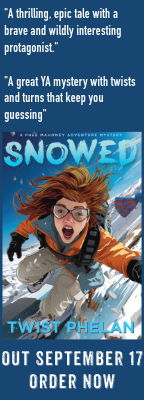by Joan Leotta
For many years Belgium remained a mystery to me, merely a place I went through. I knew it to be the home of chocolate and lace, of that most famous detective, Poirot, and Herge, the artist who wrote and drew boy detective/journalist, Tin Tin.
My recent early spring visit to a dear friend revealed not only a new depth to our forty-year friendship, it also allowed me to explore this country I had hitherto relegated/ to “next time.”
Belgium was rebuilding after almost total destruction in World War I during the 1920s and 30s when Ms, Christie was plying her pen. It’s no wonder he had moved to England. We find few traces of him in his “homeland.” But Tin Tin is on walls and shops and the hearts of the people. Of course, food and drink are also stars here. Meals can be washed down with premium beers (more than the famed Stella Artois) and chocolates to die for! My best Flemish meal was in Leuven, but I ate well everywhere else–French, Italian and general European fare.
I arrived in Brussels on March 4 of this year, finally able to say, “Its Tuesday so it must be Belgium!” Brussels was my “base camp.” I had scouted hotels noting the good ratings and locations of the Hotel Housing and Residence des Ecrins. But, my friend insisted I stay with her so I did which meant I learned how simple it was to use the city’s transportation system and of course, got to spend more time with my dear friend.

House in Bruges
Sites to See:
Brussels: Do not miss a climb to the top of the Cinquantenaire for an overview of the historic gardens of the city, a stop at the Musee Horta for a view of architecture of art nouveau era, lunch at the England Department store aka Music Museum. Eat lunch on the rooftop of the England and walk down through the interior to see exhibits on the building. I imagine Poirot would have had lunch there often! Tin Tin is center stage in many of the local shops and be sure to visit the Centre Belge de la Bande Dessinee. The building is designed by architect Horta and the art of Tin Tin comics abounds!
Bruges, a short train ride from Brussels. In the station area, invest in a small guide book and walk yourself around this charming town with canals and artists, chocolate and lace. The architecture of the place recalls the 17th century Dutch canal homes of Amsterdam.

Houses along Bruges canal
This is the 100th anniversary of the start of what the Europeans called the Great War, the War to end all wars. The devastation of Belgium was more than I had ever realized. Complete towns were leveled, and then rebuilt after the war to be as they had been! More WWII destruction, more rebuilding. What a spirit!
Unless you rent a car, you will have to take an organized tour to fully appreciate these next two sites. They are very close to Brussels, only about an hour out, but the variety of things to see, especially for the Passchendale/Zonnebeke area means you need a car or tour guide.

Joan Leotta in trenches at Passchendale museum
Ypres: WWIThis town was so destroyed that Churchill wanted to leave it that way as a memorial to the horrors of war. The people rebelled and rebuilt. Now there is a stone “gate” that bears the name of all of the British and British colonial soldiers who died there, an affecting site where a memorial service is played every night at 8 p.m.

War cemetary
Leuven: Medieval and near WWI sites is the home of the Stella Artois factory and other beers. Artwork takes center stage with a magnificent triptych of the last supper from 1467 by Dieric Boule. The University is central to life here and students on bikes weave in and out of the old streets and market squares, past the glorious cathedral and university buildings, and the modern sculptures of people doing ordinary things, a baker a woman on a bench and more. St. Peter’s Cathedral and the University library are wonders of architecture. This is where I had the best Flemish restaurant meal, de Kline Taefel.
Enjoy your trip. The only mystery about today’s Belgium for me is why it took me so long to get there!
Before you go, write to the Belgian Tourism Office and request the guides for Brussels, Bruges and Flanders Fields.
www.visitbelgium.com, or www.visitflanders.com
or the Belgian Tourist Office, 220 East 42nd Street, Room 3402, New York
Check out other mystery articles, reviews, book giveaways & short stories in our mystery section.
















0 Comments